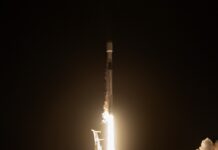A Detailed Look at the Curiosity Rover’s Latest Findings: Sols 4275-4276
NASA’s Mars rover Curiosity has once again provided us with fascinating insights into the Martian terrain, capturing a mesmerizing grayscale photograph of the Martian surface on Sol 4272, which corresponds to August 12, 2024, on Earth. This image, taken with the rover’s Left Navigation Camera, showcases a rugged, rocky foreground that contrasts beautifully with the rolling hills and smooth dunes in the background. This visual serves as a testament to the diverse geological features of Mars.
Earth Planning Date and Mission Activities
The Earth planning date for these activities was Wednesday, August 14, 2024. The central focus of the plan was the Sample Analysis at Mars (SAM) instrument’s Gas Chromatograph Mass Spectrometer (GCMS). This sophisticated tool continues the analysis of the "Kings Canyon" drill sample. The GCMS is known for its high energy consumption, but thanks to efficient planning, the mission team has managed to conduct this experiment without compromising other scientific activities.
Geological Targets and Scientific Instruments
Curiosity has spent a significant amount of time in the "Kings Canyon" area, allowing the team to become intimately familiar with this specific location. This extended stay has enabled the mission team to focus on various geological targets, both near and far. The ChemCam’s laser spectrometer, an instrument designed to analyze the chemical composition of rocks and soils, was directed at two nearby targets named "Meysan Lake" and "Washburn Lake." Additionally, ChemCam has been tasked with capturing long-distance mosaics of "Milestone Peak" and the ever-present "Kukenan Butte." Mastcam, another vital instrument on Curiosity, is scheduled to create a mosaic of "Wilkerson Butte."
Atmospheric Observations and Environmental Monitoring
Staying in one spot has its advantages, particularly for atmospheric and environmental monitoring. Curiosity currently has a great vantage point overlooking a nearby sand patch, which is prominently featured in the image. This location provides an excellent opportunity for observing Martian dust devils—small, whirlwinds that pick up dust and debris from the surface. A dust devil movie is included in the current plan, along with observations of wind-driven movements closer to the rover. These observations are crucial for understanding the dynamic Martian environment.
Moreover, the mission team is closely monitoring the amount of dust suspended in the Martian atmosphere. This is done through regular tau observations, where "tau" refers to optical depth—a measure of how transparent or opaque the atmosphere is. During the dusty season, the atmosphere becomes more opaque, making it challenging to see far distances. These tau measurements are essential for understanding seasonal variations and planning future missions.
Review and Reactions
The meticulous planning and execution of these scientific activities highlight the incredible capabilities of the Curiosity rover and the dedication of the mission team. The ability to conduct multiple experiments, analyze geological samples, and monitor atmospheric conditions simultaneously is a testament to the sophisticated design of the rover and the expertise of the scientists involved.
The image captured on Sol 4272 has garnered significant attention within the scientific community and among space enthusiasts. The detailed view of the Martian surface, with its varied geological features, provides valuable insights into the planet’s history and potential for past life. The ongoing analysis of the "Kings Canyon" drill sample using the GCMS is particularly exciting, as it could reveal crucial information about the chemical composition of Martian rocks and soils.
Technical Jargon Explained
For those unfamiliar with some of the technical terms used in this article, here are straightforward explanations:
- Sol: A Martian day, which is approximately 24 hours and 39 minutes long.
- GCMS (Gas Chromatograph Mass Spectrometer): An instrument that separates and identifies different chemicals in a sample.
- ChemCam (Chemistry and Camera Complex): A tool that uses a laser to analyze the chemical composition of rocks and soils from a distance.
- Mastcam (Mast Camera): A camera system on the rover that captures high-resolution images and videos of the Martian terrain.
- Tau (Optical Depth): A measure of how much sunlight is blocked by dust in the atmosphere. Higher tau values indicate more dust and less visibility.
Good to Know Information
Curiosity’s mission is part of NASA’s Mars Science Laboratory (MSL) project, which aims to explore the Red Planet’s surface and climate. The rover has been operational since its landing on August 6, 2012, and has made significant contributions to our understanding of Mars. It has traveled over 25 kilometers and climbed more than 300 meters in elevation, all while conducting various scientific experiments.
One of the most notable achievements of Curiosity is the discovery of ancient riverbeds and lakebeds, indicating that Mars once had conditions suitable for liquid water. This finding has profound implications for the planet’s potential to have supported microbial life in the past.
Explore More
For those interested in diving deeper into the mission and its findings, NASA provides numerous resources and updates on their official website. Here are some useful links:
- Mission Overview
- Where is Curiosity?
- Mission Updates
- Science Instruments
- Mars Exploration Goals
Conclusion
The ongoing exploration and scientific analysis conducted by the Curiosity rover continue to provide invaluable insights into the Martian environment. The data collected not only enhances our understanding of Mars but also lays the groundwork for future missions, including the Mars Sample Return mission and potential human exploration.
With each passing sol, Curiosity brings us one step closer to unraveling the mysteries of the Red Planet, and its findings are eagerly anticipated by scientists and space enthusiasts worldwide. Stay tuned for more updates and discoveries from this remarkable mission.
For more Information, Refer to this article.


































